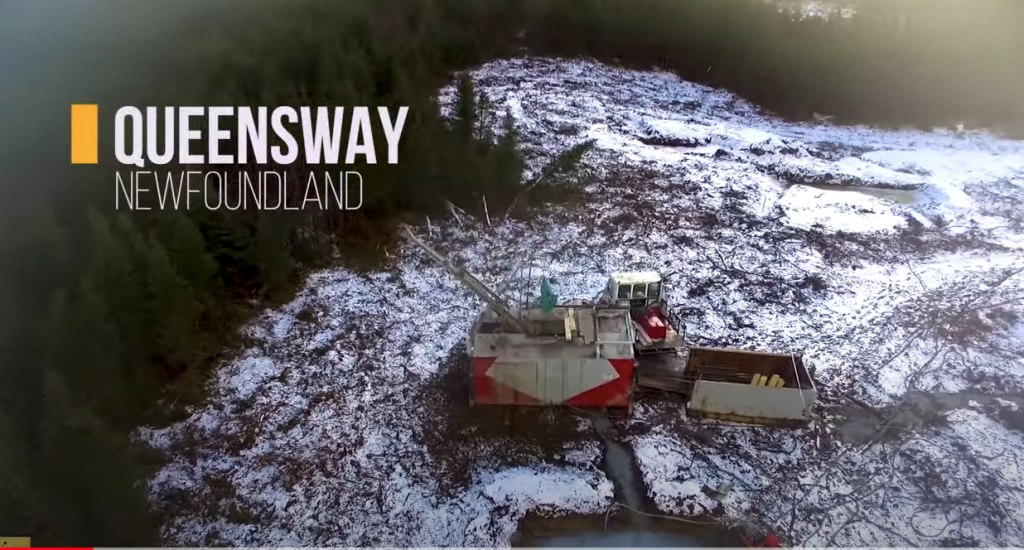New Found Gold boosts Queensway budget to $35M, drilling to 200,000 metres


 New Found Gold's Queensway project in Newfoundland. Credit: Pallisades Gold via YouTube[/caption]
New Found Gold's Queensway project in Newfoundland. Credit: Pallisades Gold via YouTube[/caption]
Based on drill results to date at its Queensway gold project in Newfoundland, junior New Found Gold has doubled the size of its drill program to 200,000 metres from 100,000 metres.
The expanded program, which will employ eight drill rigs – up from four currently – will also allow New Found to drill new targets defined along 5 km of strike of the Appleton Fault Zone and 3 km of strike of the JBP Fault Zone. The four new drill rigs are expected to be mobilized by February, after contracts are finalized.
With $67 million in working capital, the B.C.-based explorer is well equipped to handle the expanded program, which has a revised budget, as of Jan. 1, of $35 million.
Last year, the company completed 13,400 metres of drilling at Queensway, located 15 km west of Gander.
While there is a current backlog of assay results, New Found says many of the samples were submitted on a rush basis and additional results are expected next week.
Highlights from drilling last year included 19 metres of 92.86 g/t gold starting from 96 metres depth at the Keats zone in the first hole drilled at the project, reported in January 2020. Recent highlights have included 41.4 metres of 22.3 g/t gold and 13.1 metres of 45.3 g/t gold in stepout drilling at the Keats zone, which lies on the Appleton Fault Zone.
"Our drilling to date at Queensway has yielded impressive intervals of high-grade gold over significant widths,” said New Found Gold CEO Craig Roberts, in a release. “With this increase in the drill count we can now accelerate our grid drilling program along 5 km of strike on the Appleton Fault Zone. We will also concurrently commence testing targets along 3 km of strike on the parallel JBP Fault Zone. Both zones are highly prospective for gold with multiple showings that require systematic drilling.”
New Found has installed a new 7,000-sq.-ft. core process facility onsite at Queensway to handle the large volume of drill core being generated.
New Found Gold holds 1,500 sq. km of ground in the Central Newfoundland Gold Belt. The Queensway project hosts two parallel, northeast-trending faults: the Appleton Fault Zone, which hosts auriferous quartz veins within shale and greywacke and the JBP Fault Zone, which contains a sedimentary hosted quartz vein system. The company says the high-grade gold at Queensway is similar to the epizonal high-grade gold mineralization at Kirkland Lake Gold's Fosterville mine in Australia.
The Queensway property has seen previous exploration, with about 21,000 metres of drilling between 1985 and 2012, including a historic resource by Noranda outlining 77,943 oz. gold at 10.3 g/t gold (not National Instrument 43-101 compliant) at the Knob deposit on the Appleton Fault Zone.
New Found Gold went public and began trading last August after completing a $27.3-million initial public offering.
In December, the junior – which counts Pallisades Gold, Eric Sprott, Novo Resources and Rob McEwen as its largest shareholders – was added to the VanEck Vectors Junior Gold Miners ETF (GDXJ).
For more information, visit: www.newfoundgold.ca.
Comments